Abstract
1. A technique is described for perfusing the isolated cat pancreas with saline solutions.
2. Single doses of secretin, although present in the perfusate for only a short time, caused a prolonged flow of pancreatic juice.
3. In response to continuous secretin infusion, the preparation secreted for up to 6 hr a juice which was similar to that obtained in vivo, with the exception that the bicarbonate concentration decreased and the chloride concentration increased with time, even when the rate of secretion remained constant.
4. The osmolalities of perfusate and secretion were identical over a range of 450 m-osmoles/kg, but the electrolyte concentration of the secretion was always slightly higher than that of the perfusate. Variations from perfusate isosmolality produced inverse changes in the secretion rate, over the range from 600 m-osmoles/kg, at which secretion ceased, to 150 m-osmoles/kg, at which the rate was highest. At perfusate osmolalities below 150 m-osmoles/kg secretion rapidly declined.
5. Reduction in perfusate sodium chloride concentration, isosmolality being maintained with sucrose, caused a fall in secretion rate, but the sodium concentration of the juice remained constant until perfusate sodium concentration was reduced to about 70 m-equiv/l. Below this level it declined and sucrose was detected in the juice in quantities almost sufficient to account for the equiosmolality of juice and perfusate.
6. Two hypotheses about the mechanism of water and electrolyte secretion by the pancreas are presented.
Full text
PDF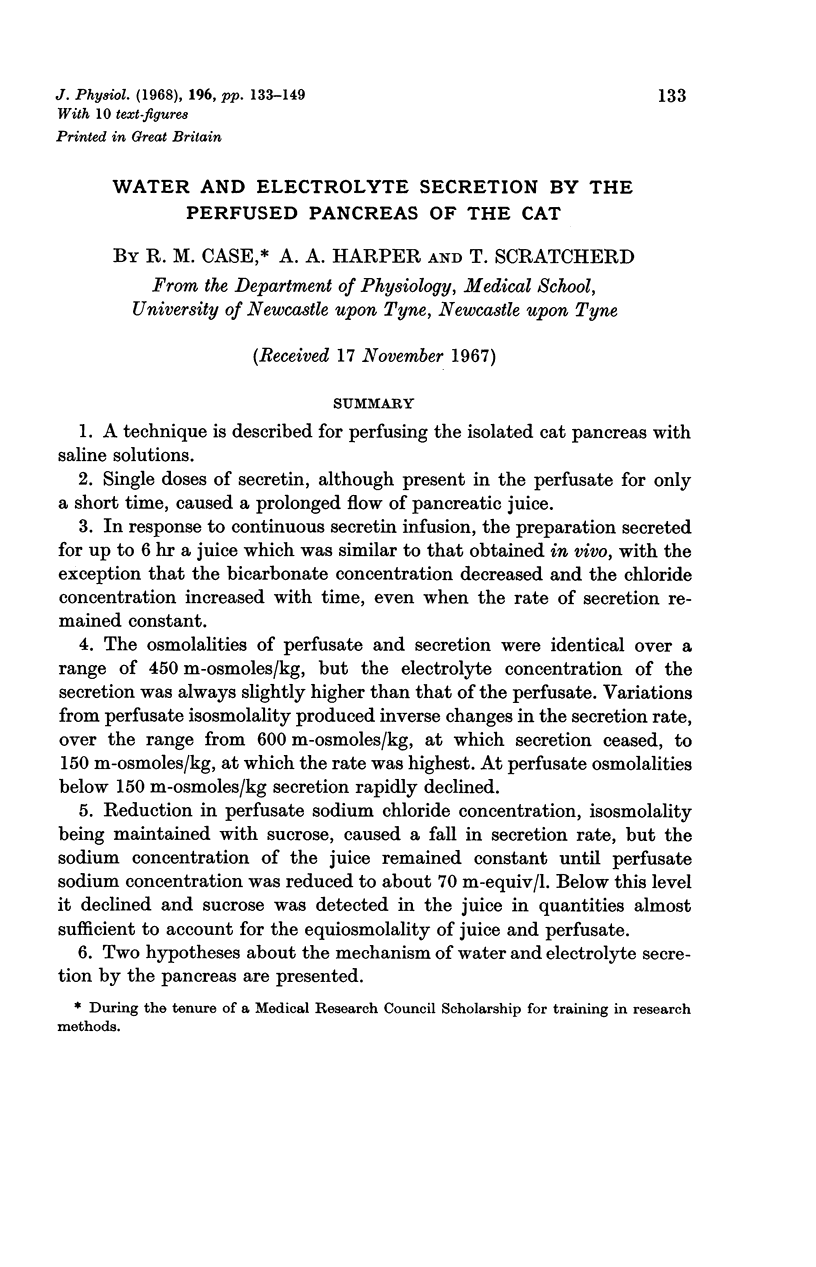
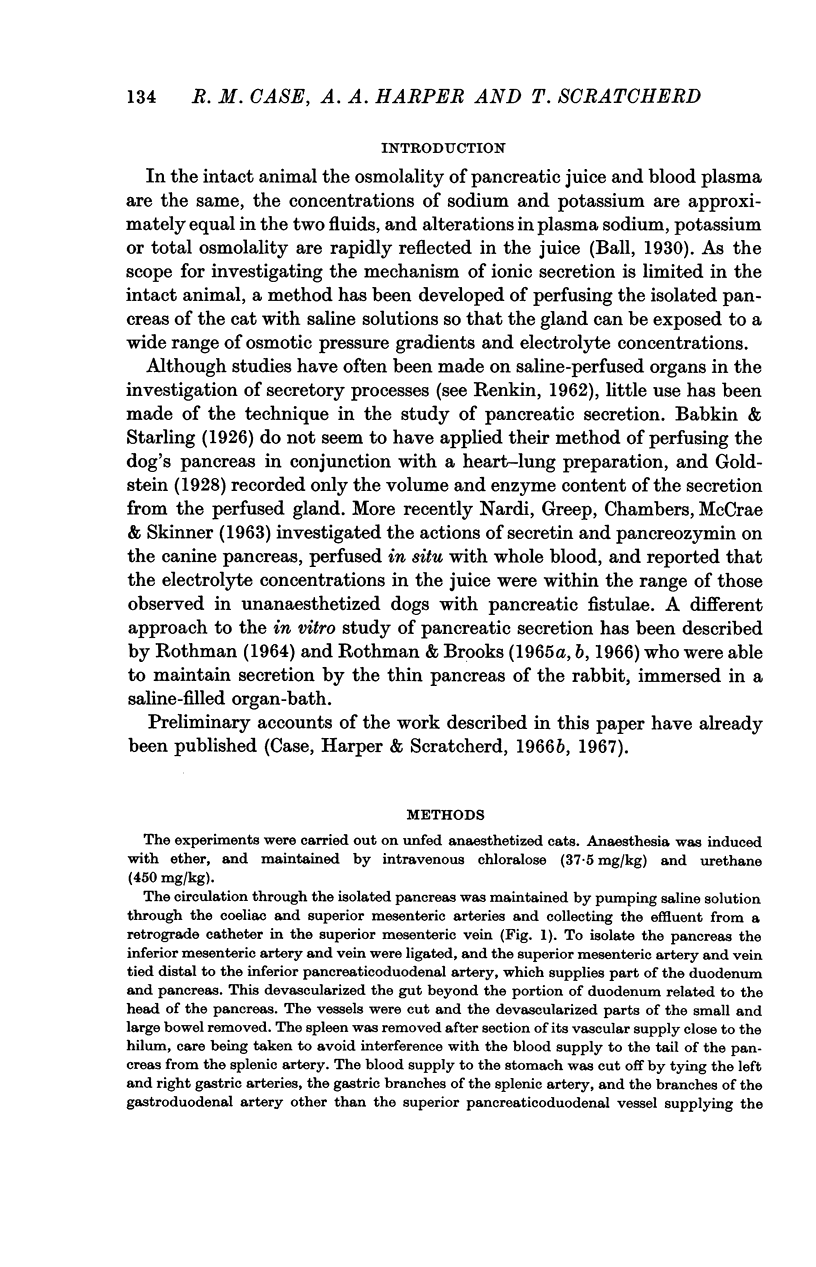
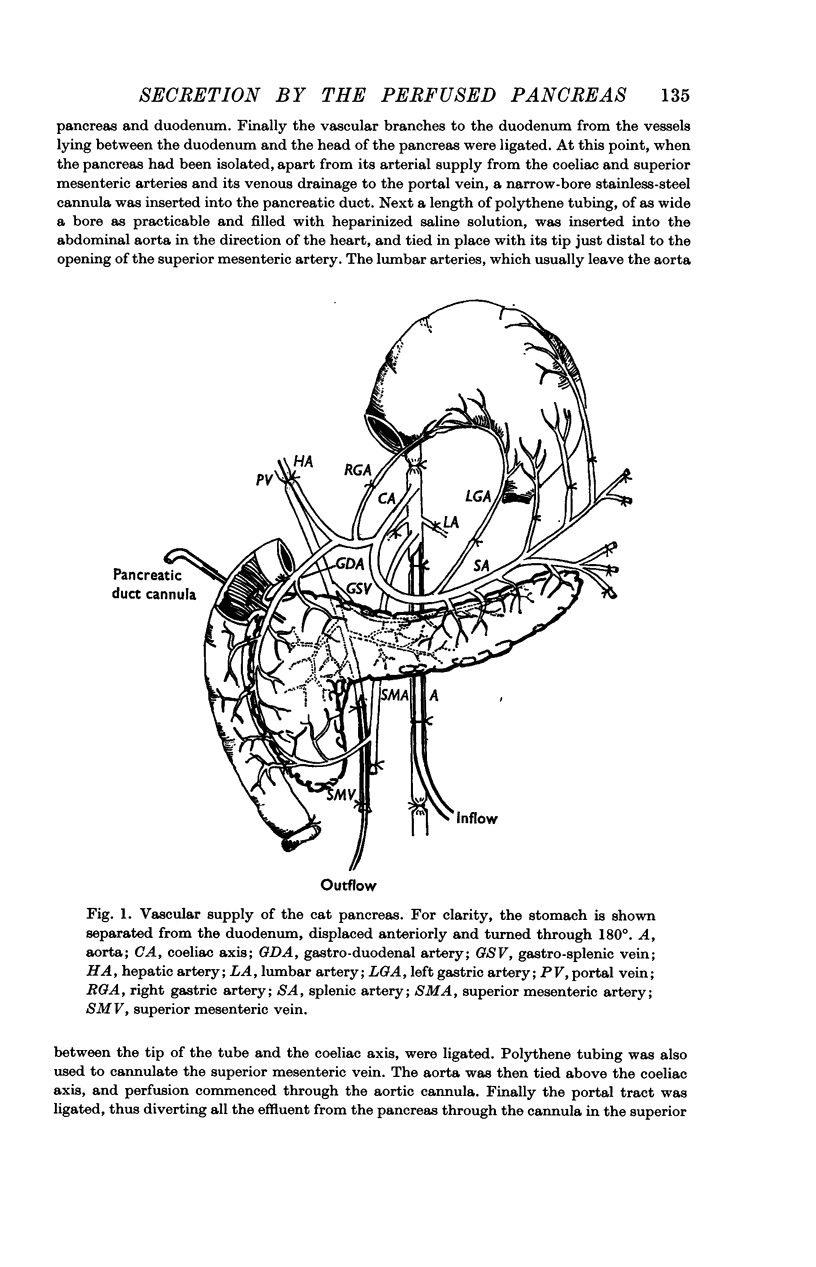
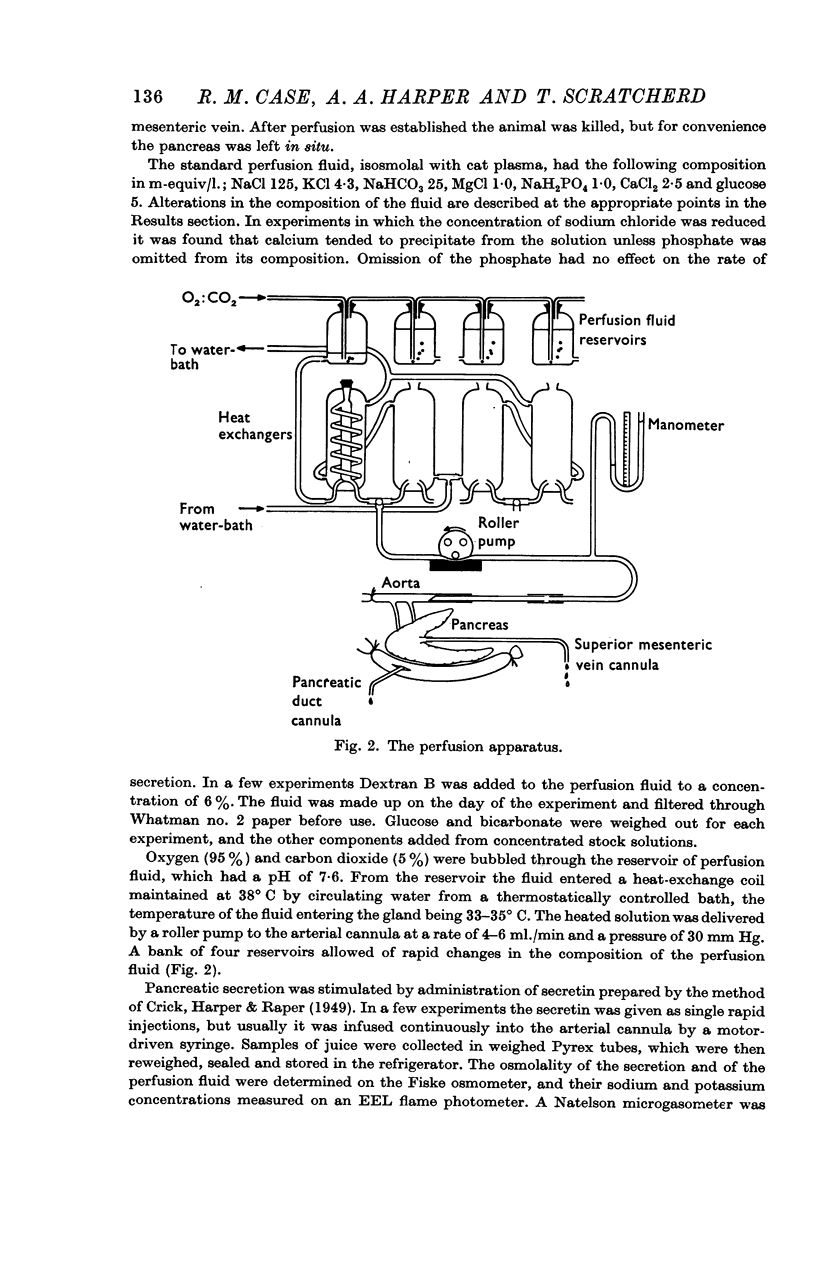
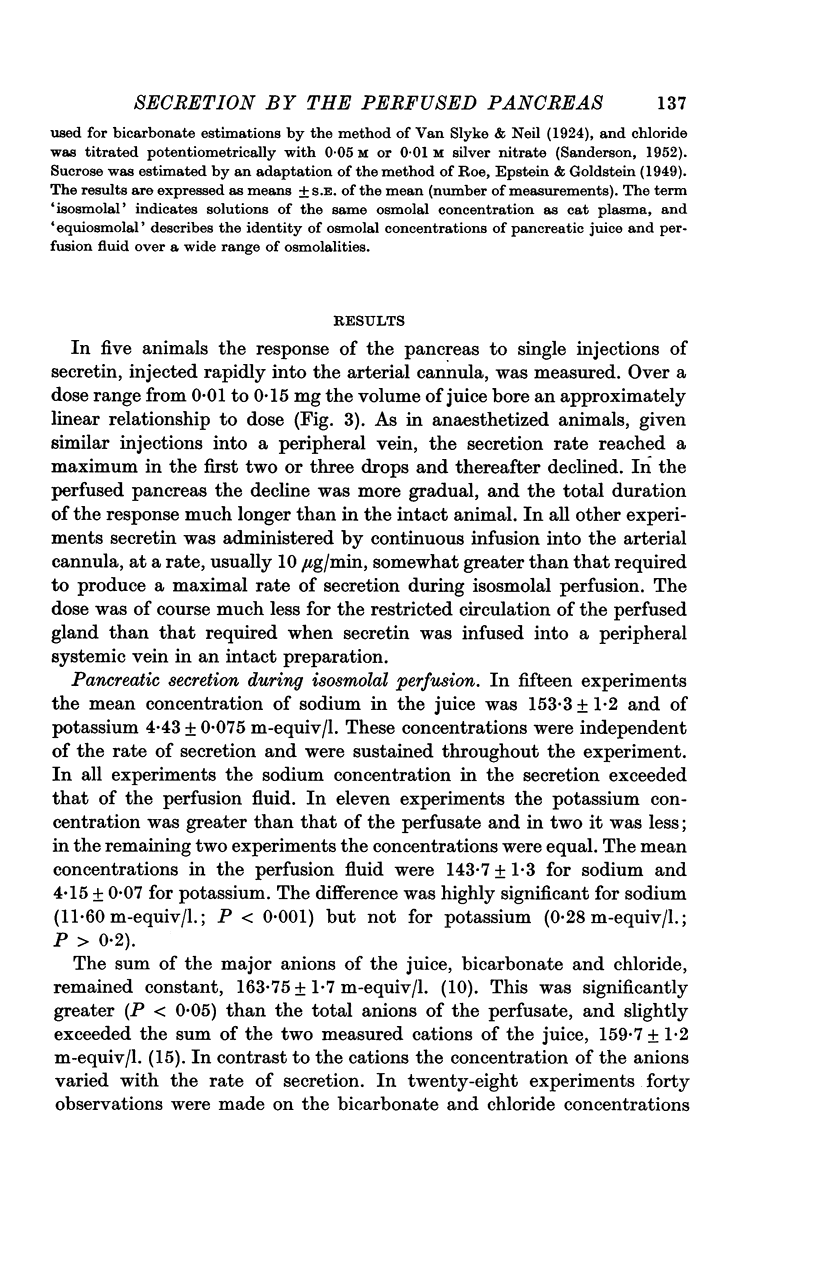
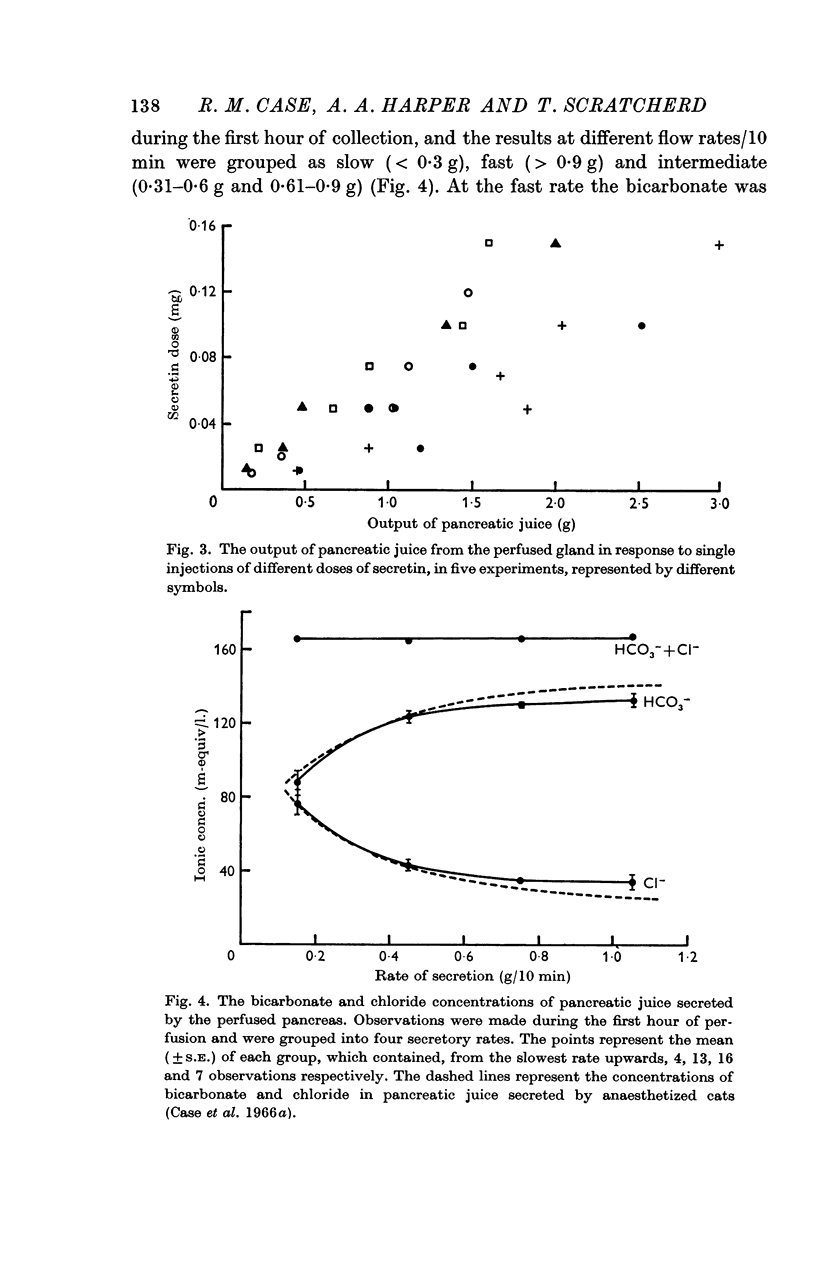
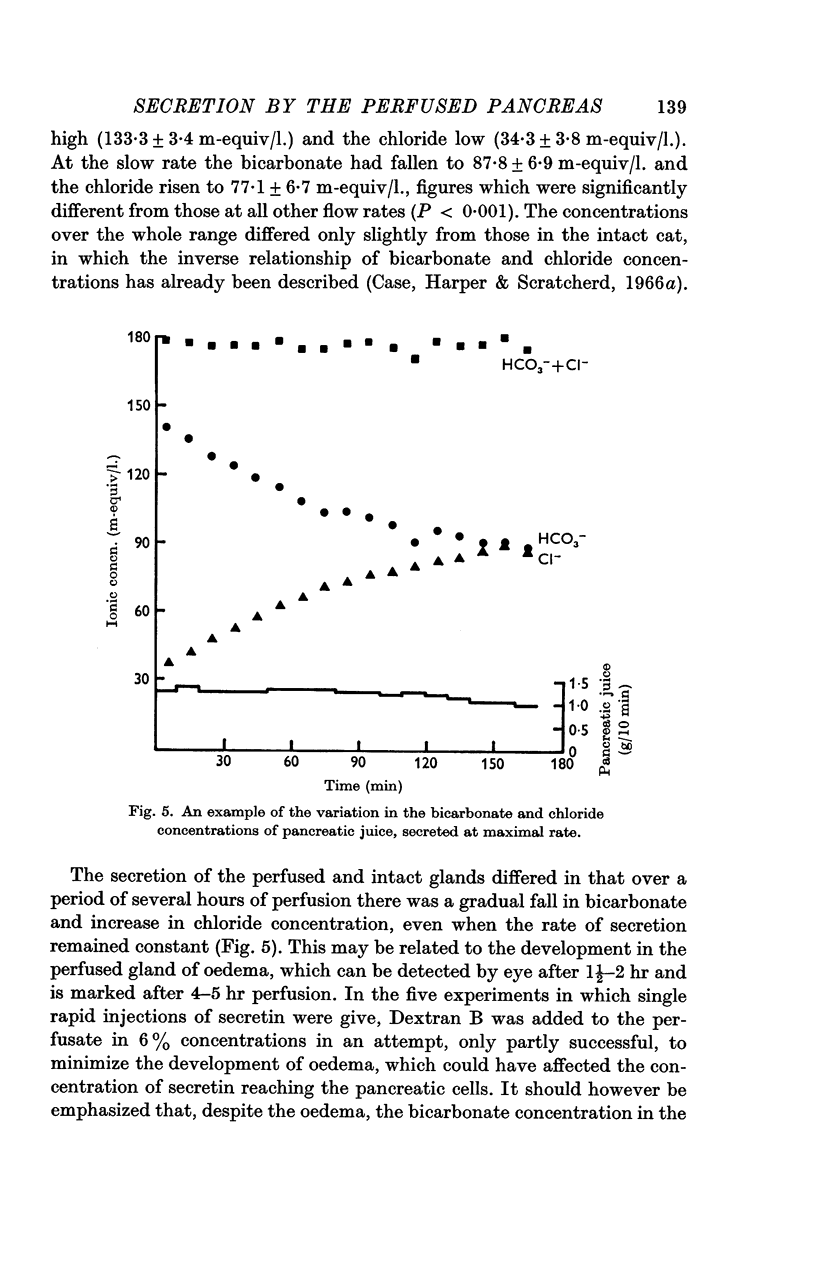
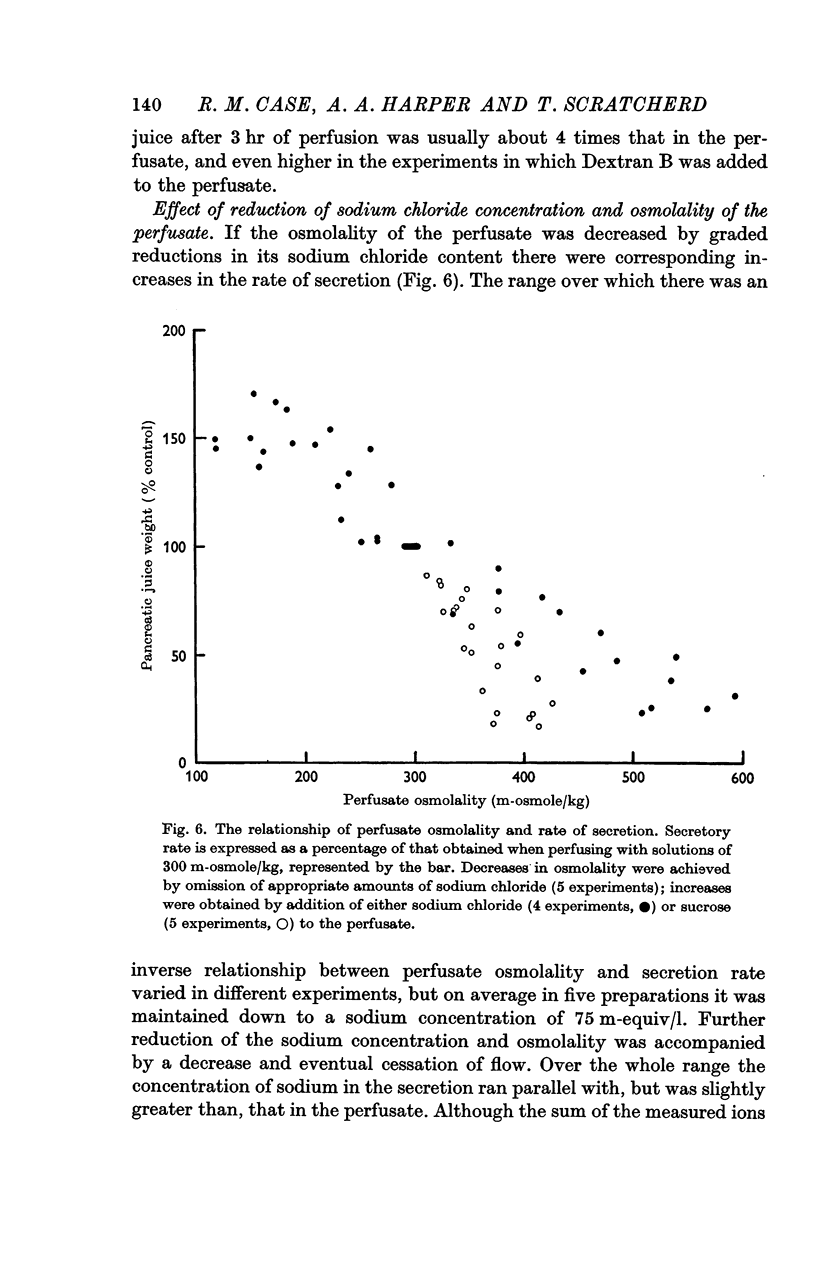
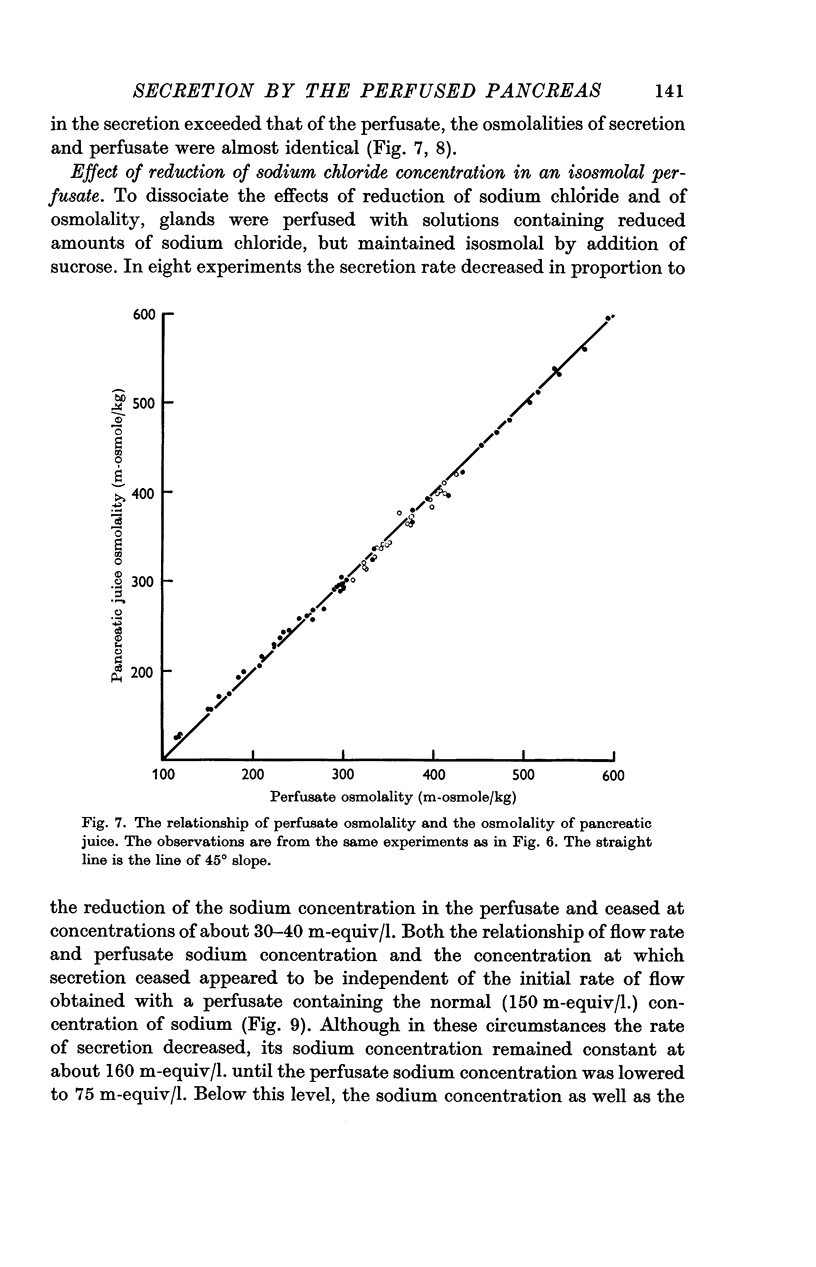
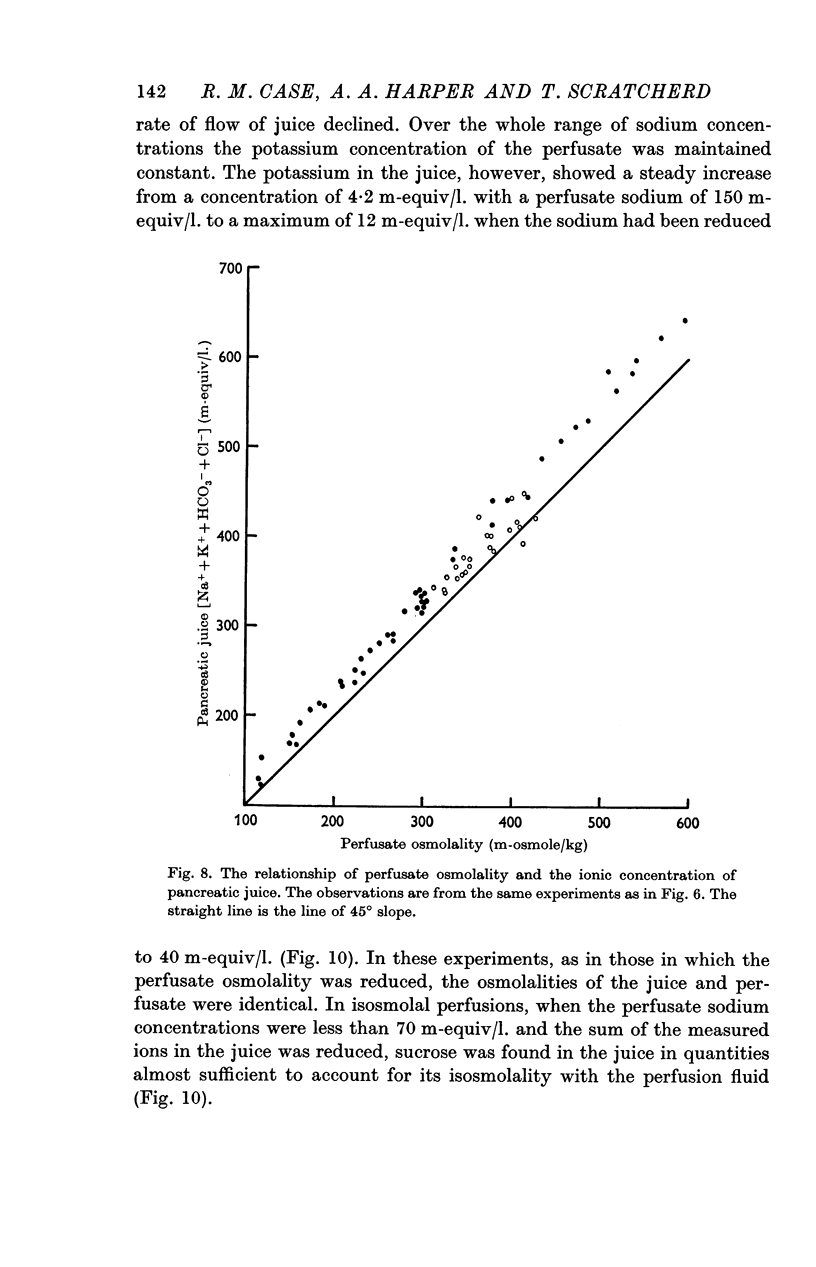
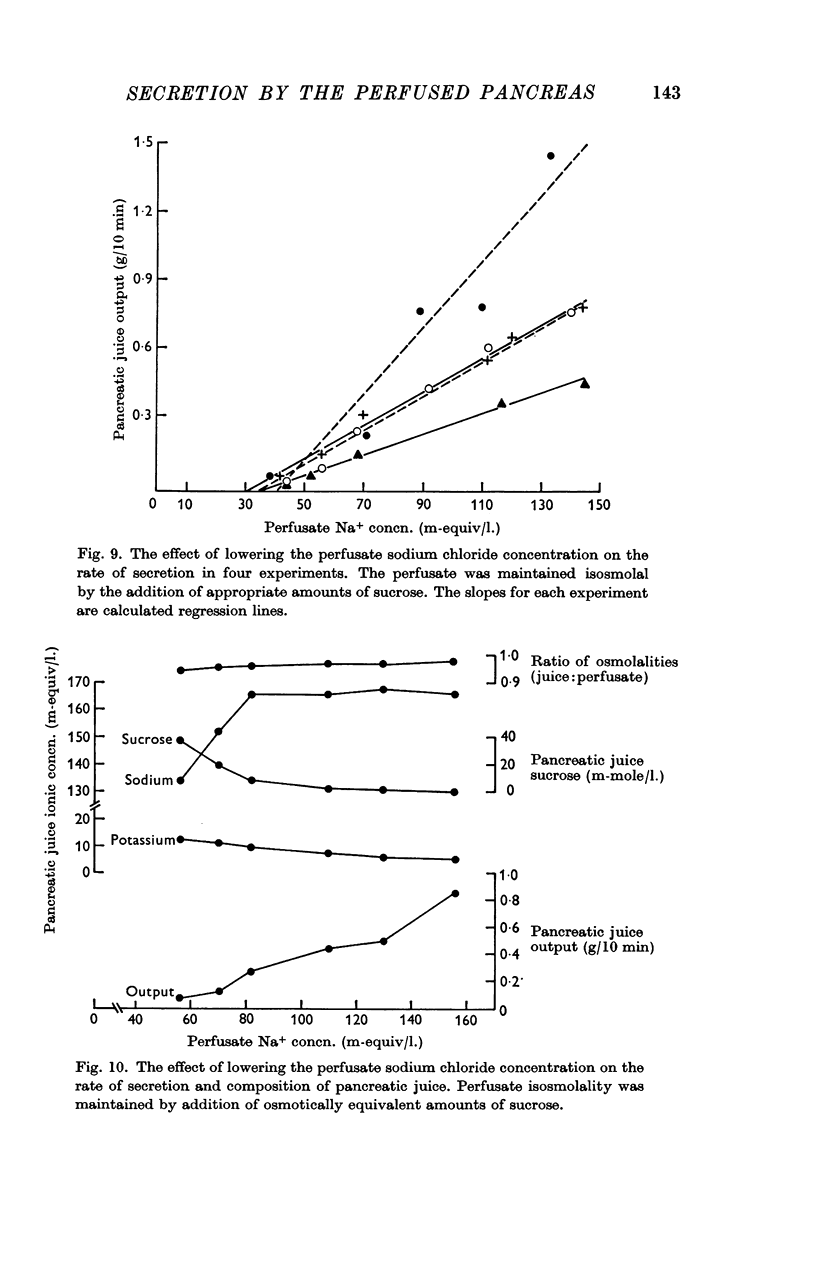
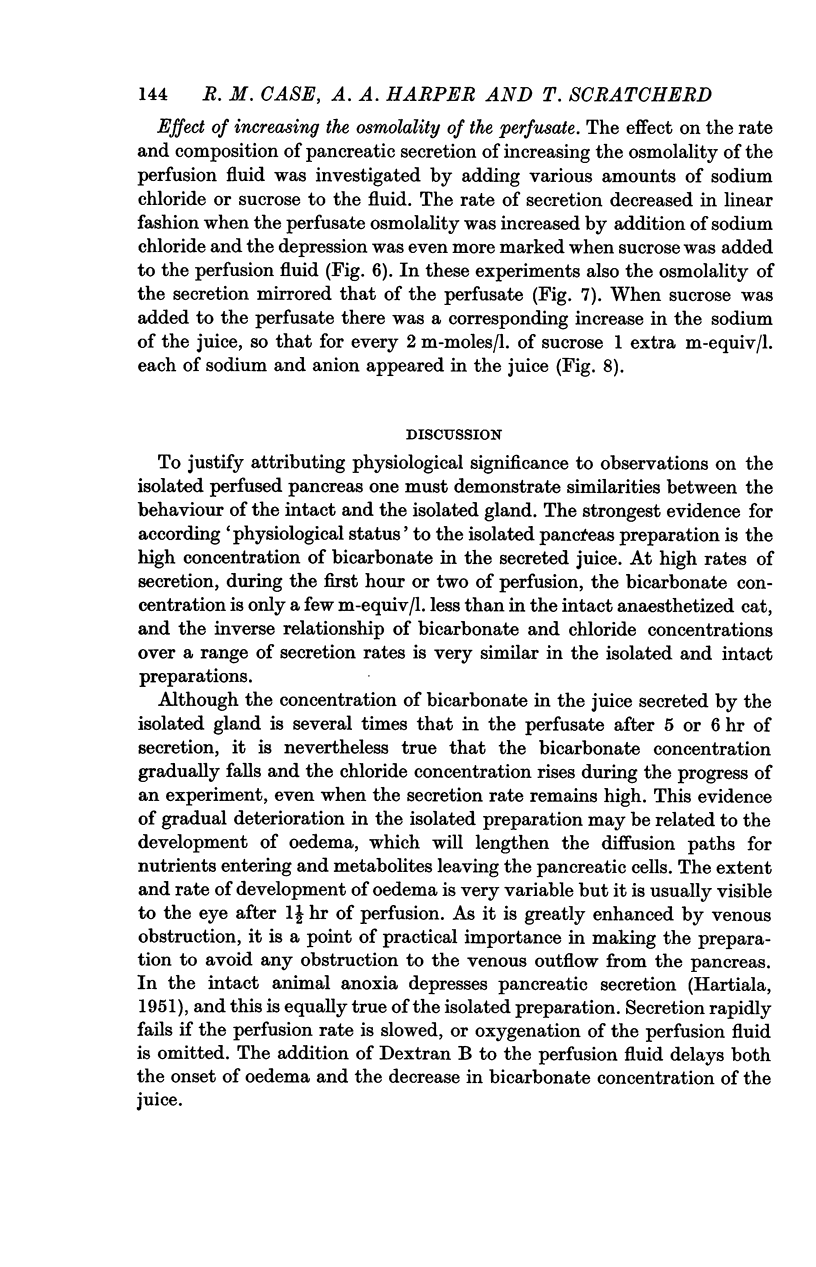
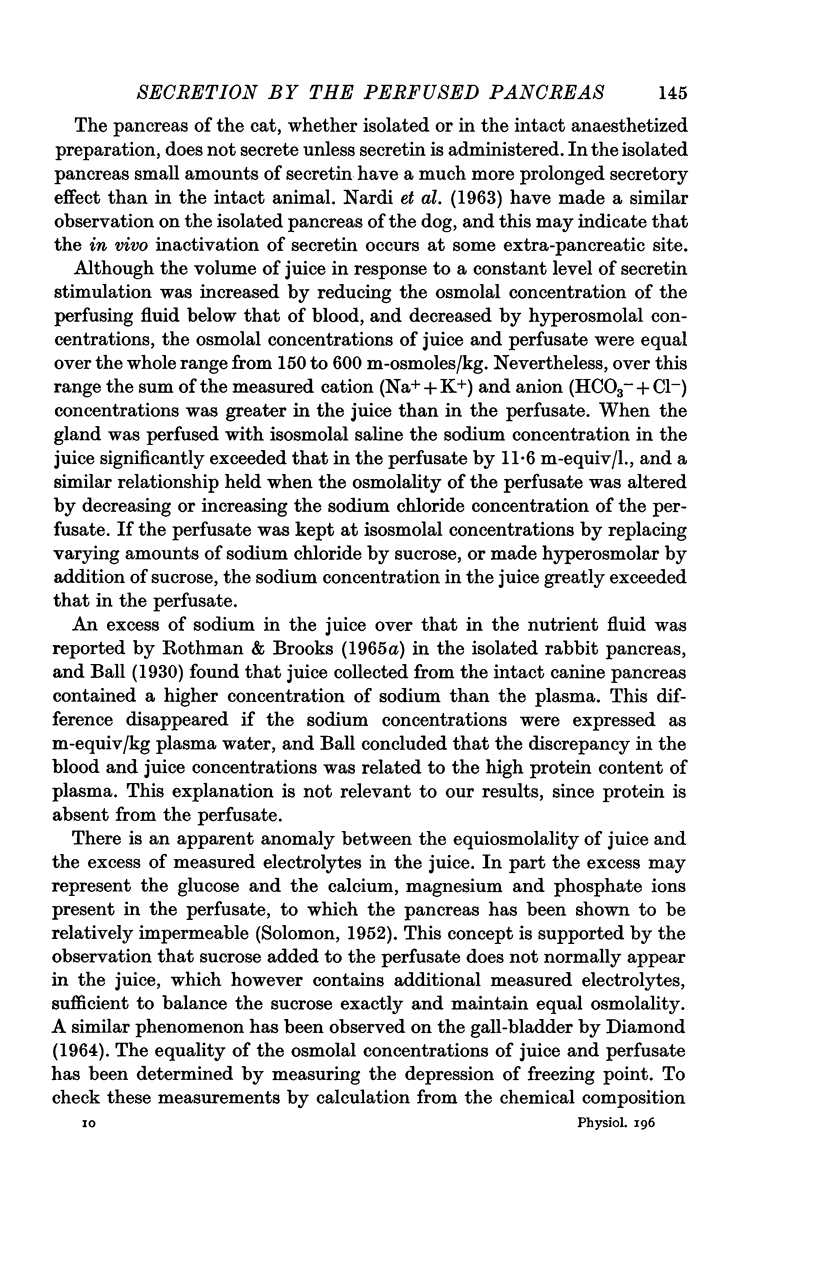
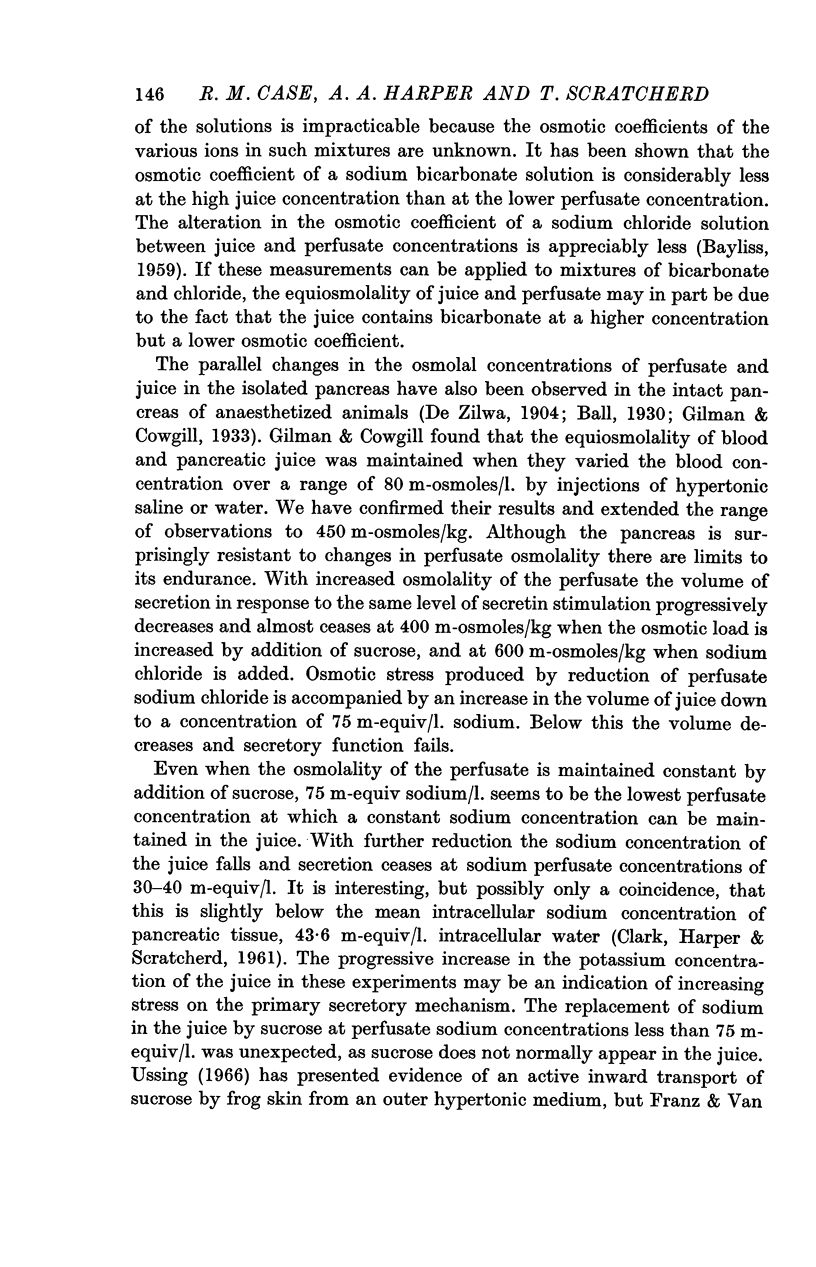
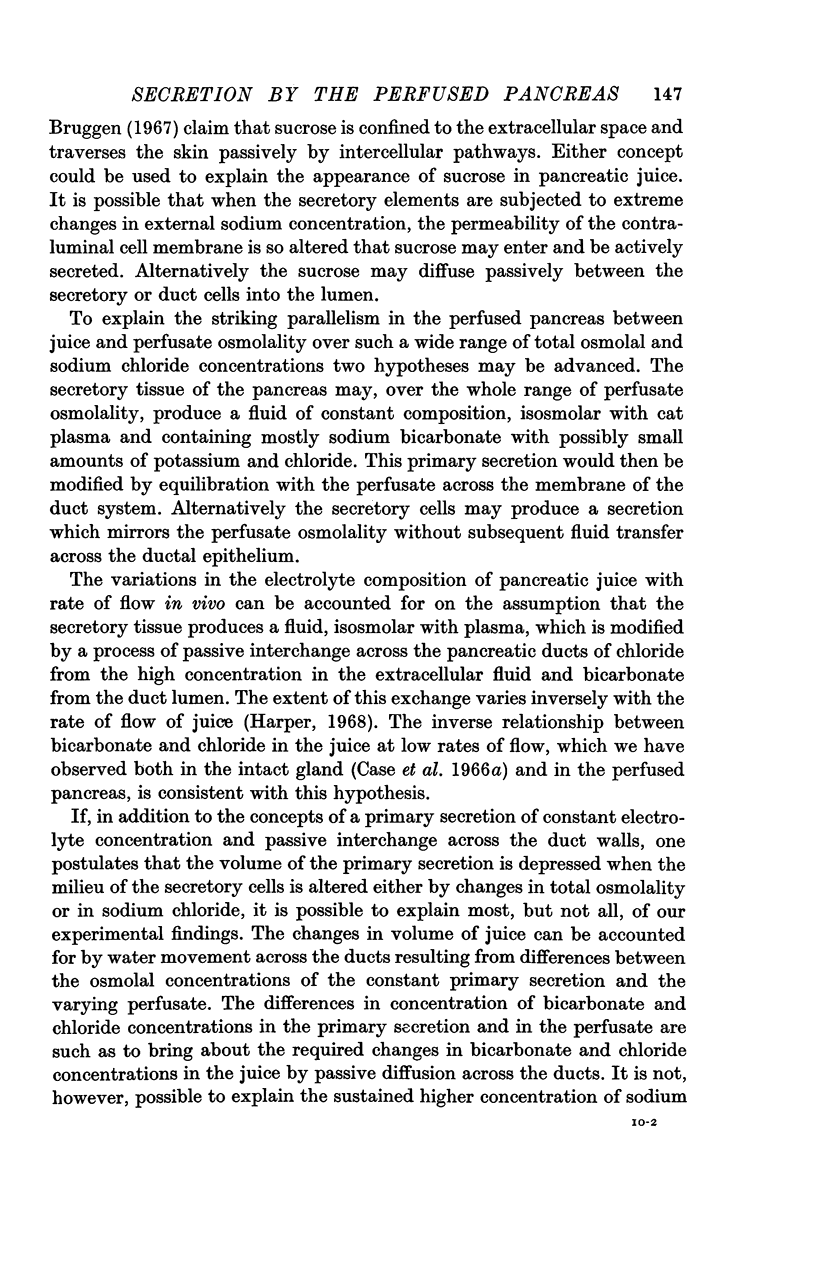
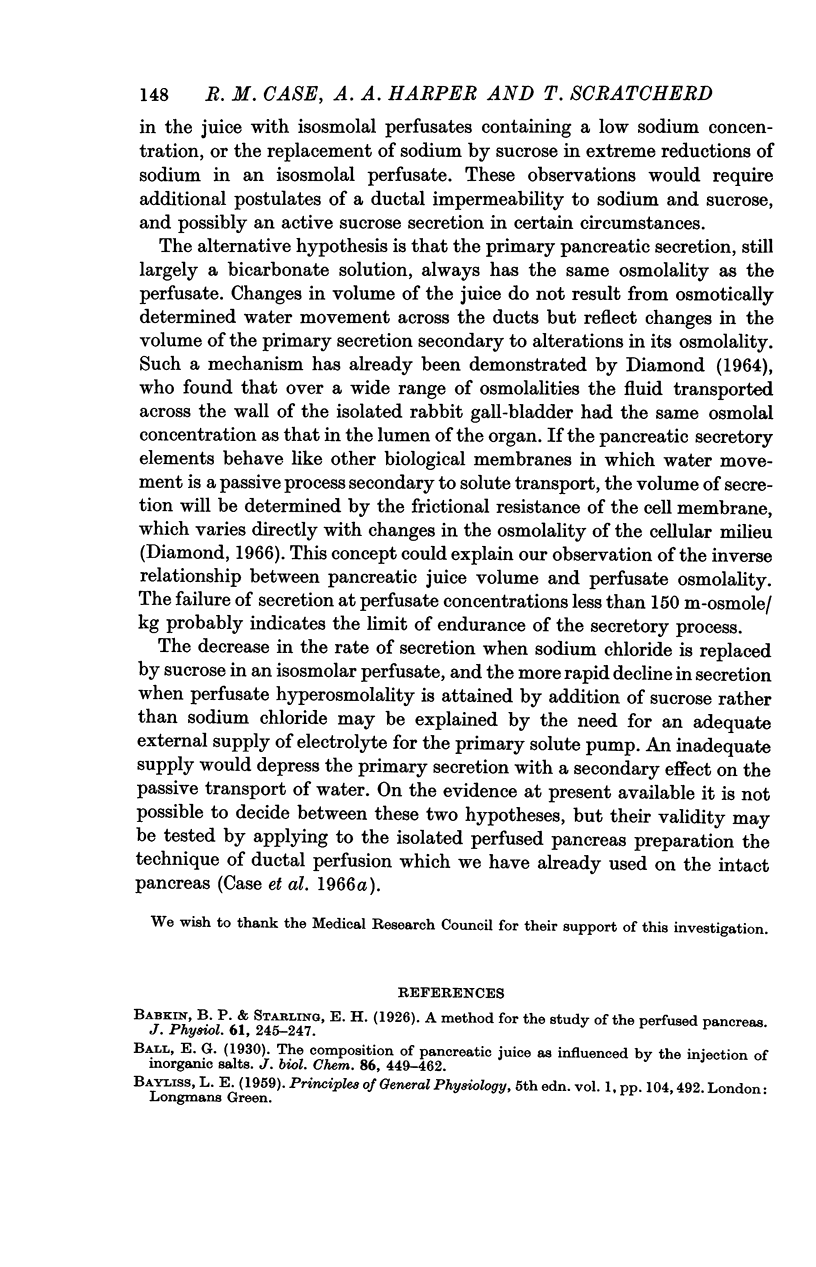
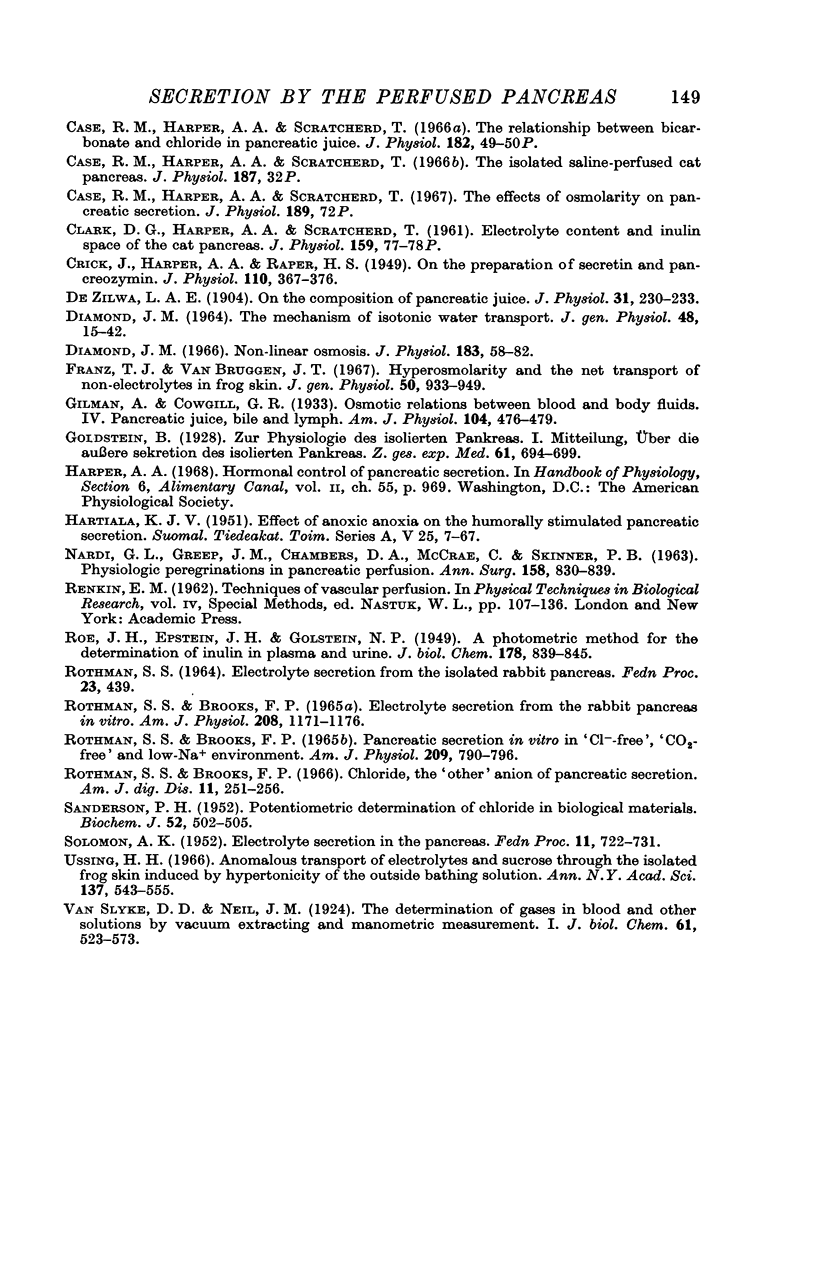
Selected References
These references are in PubMed. This may not be the complete list of references from this article.
- Babkin B. P., Starling E. H. A method for the study of the perfused pancreas. J Physiol. 1926 Apr 23;61(2):245–247. doi: 10.1113/jphysiol.1926.sp002286. [DOI] [PMC free article] [PubMed] [Google Scholar]
- CRICK J., HARPER A. A., RAPER H. S. On the preparation of secretin and pancreozymin. J Physiol. 1949 Dec;110(3-4):367–376. doi: 10.1113/jphysiol.1949.sp004445. [DOI] [PMC free article] [PubMed] [Google Scholar]
- Case R. M., Harper A. A., Scratcherd T. The effects of osmolarity on pancreatic secretion. J Physiol. 1967 Apr;189(2):72P–72P. [PubMed] [Google Scholar]
- DIAMOND J. M. THE MECHANISM OF ISOTONIC WATER TRANSPORT. J Gen Physiol. 1964 Sep;48:15–42. doi: 10.1085/jgp.48.1.15. [DOI] [PMC free article] [PubMed] [Google Scholar]
- De Zilwa L. A. On the composition of pancreatic juice. J Physiol. 1904 Jun 30;31(3-4):230–233. doi: 10.1113/jphysiol.1904.sp001033. [DOI] [PMC free article] [PubMed] [Google Scholar]
- Diamond J. M. Non-linear osmosis. J Physiol. 1966 Mar;183(1):58–82. doi: 10.1113/jphysiol.1966.sp007851. [DOI] [PMC free article] [PubMed] [Google Scholar]
- Franz T. J., Van Bruggen J. T. Hyperosmolarity and the net transport of nonelectrolytes in frog skin. J Gen Physiol. 1967 Mar;50(4):933–949. doi: 10.1085/jgp.50.4.933. [DOI] [PMC free article] [PubMed] [Google Scholar]
- NARDI G. L., GREEP J. M., CHAMBERS D. A., MCCRAE C., SKINNER D. B. PHYSIOLOGIC PEREGRINATIONS IN PANCREATIC PERFUSION. Ann Surg. 1963 Nov;158:830–839. doi: 10.1097/00000658-196311000-00012. [DOI] [PMC free article] [PubMed] [Google Scholar]
- ROE J. H., EPSTEIN J. H., GOLDSTEIN N. P. A photometric method for the determination of insulin in plasma and urine. J Biol Chem. 1949 Apr;178(2):839–845. [PubMed] [Google Scholar]
- ROTHMAN S. S., BROOKS F. P. ELECTROLYTE SECRETION FROM RABBIT PANCREAS IN VITRO. Am J Physiol. 1965 Jun;208:1171–1176. doi: 10.1152/ajplegacy.1965.208.6.1171. [DOI] [PubMed] [Google Scholar]
- Rothman S. S., Brooks F. P. Chloride, the "other" anion of pancreatic secretion. Am J Dig Dis. 1966 Mar;11(3):251–256. doi: 10.1007/BF02233906. [DOI] [PubMed] [Google Scholar]
- Rothman S. S., Brooks F. P. Pancreatic secretion in vitro in "Cl-free," "Co-2-free," and low-Na+environment. Am J Physiol. 1965 Oct;209(4):790–796. doi: 10.1152/ajplegacy.1965.209.4.790. [DOI] [PubMed] [Google Scholar]
- SANDERSON P. H. Potentiometric determination of chloride in biological fluids. Biochem J. 1952 Nov;52(3):502–505. doi: 10.1042/bj0520502. [DOI] [PMC free article] [PubMed] [Google Scholar]
- SOLOMON A. K. Electrolyte secretion in the pancreas. Fed Proc. 1952 Sep;11(3):722–731. [PubMed] [Google Scholar]
- Ussing H. H. Anomalous transport of electrolytes and sucrose through the isolated frog skin induced by hypertonicity of the outside bathing solution. Ann N Y Acad Sci. 1966 Jul 14;137(2):543–555. doi: 10.1111/j.1749-6632.1966.tb50180.x. [DOI] [PubMed] [Google Scholar]


